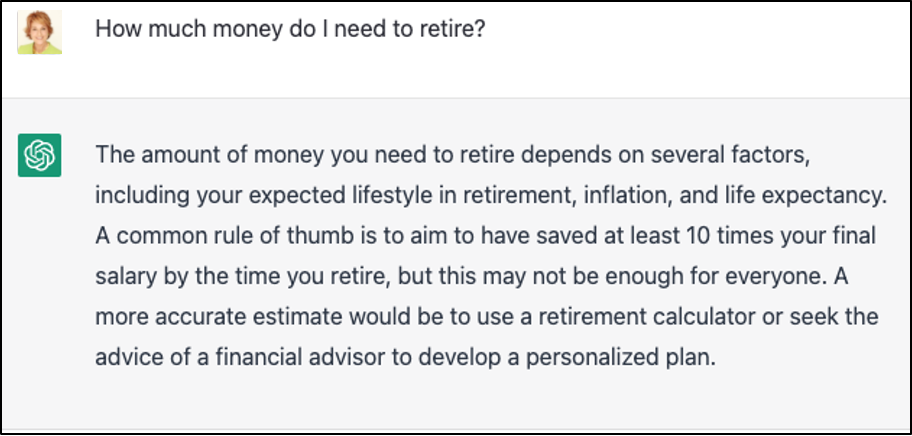ChatGPT has been making headlines since it launched last year and gained 1 million users in the first week.
If you’re not familiar with ChatGPT, it’s an artificial intelligence computer program that generates human-like answers to almost any question you ask.
So I decided to conduct a little experiment and ask it a simple question:
How much do I need to retire?”
Here’s what the “robot” told me:
 [Read more…] “Why “10 Times Your Income” Isn’t a Smart Retirement Goal”
[Read more…] “Why “10 Times Your Income” Isn’t a Smart Retirement Goal”
